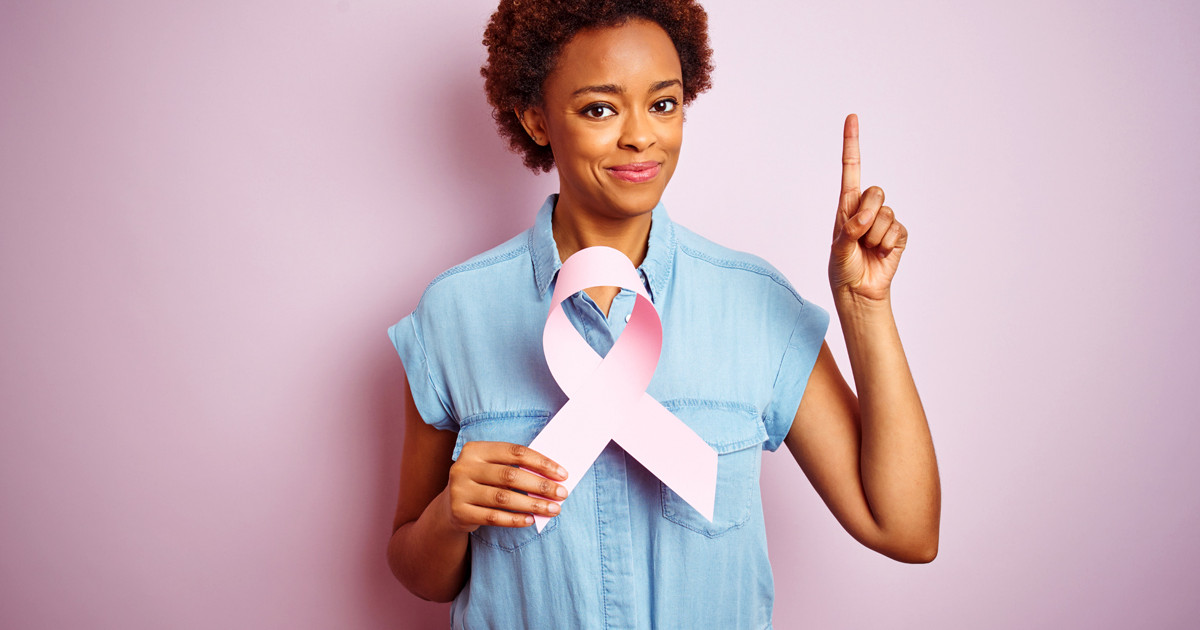NABJ Black News & Views
Could Black women dying their hair lead to increased rates of breast cancer? A recently released study found that may be the case for Black women who frequently use permanent dye in their hair.
Regular use of permanent hair dye increases breast cancer risk by 9 percent, according to the 2019 study.
“Hair relaxer and hair color should never enter the body. Never,” the Director of The Chicago Dudley Beauty College and Products Training Center, Betty Clawson said..
The study published by the University of North Carolina and the National Institute of Health supports Clawson’s assessment. The research names permanent hair dye and chemical hair straighteners as possible risk factors linked to breast cancer.
“What many people don’t realize is that hair care is healthcare,” Clawson said when she learned of the study.
It is important to note that breast cancer is a complex disease. The cause has been narrowly linked to several factors that come together to create specific outcomes resulting in different strains.
A more complex issue may be that even though Black and White women are diagnosed for breast cancer at the same rate, Black women are 40 percent more likely to die from it.
Black women are found to be diagnosed with breast cancer at younger ages and with more aggressive forms, but there has not been much research provided for the reason why until now.
This study on hair care practices focused on how lifestyle habits affect certain ethnic groups. It may have opened the door to understanding how some physical routines may biologically affect this disparity.
The products reviewed in the study are mostly used by Black women and may contain more hormonally active ingredients than other products.
Clawson was the founding dean for the first hair care university in North Carolina before heading Midwest to run the Chicago Dudley Hair College which she has done for almost 30 years.
“I am pro chemical, don’t get me wrong, I am super pro chemical,” Clawson said as she sat next to over five rows of Dudley relaxer, dye, gel, and conditioner products in the school’s lobby. “But I am against the lack of information and the lack of training that ends in the misuse of chemicals.”
The study pointed out the risk increased with the frequency of dye use and that Black woman use permanent hair dye more frequently than white women, therefore increasing their breast cancer risk.
Chicago hairstylist Crystal Megginson colors hair often but she has had a hard time explaining how the process works to clients that think they know more about color than her sometimes.
“People experiment at home with color, they come in and tell you they want a color a certain way and how they got it like that,” Megginson said.” Different women have different color pigments in their hair, and the way they get desired looks is destroying their hair sometimes. I’m not gonna lie to you, sometimes I’m scared of hair color, I rather you sew in or glue something in your hair first to see how it’s going to look before you decide to try or get me to try and achieve a particular color on your raw hair.”
But there are some instructions even Megginson says she has broken.
“I feel the hair with my hand when I dye it sometimes, not all the time, but it’s tempting and you’re not supposed to … that dye is not supposed to be all over people’s foreheads and neck, it’s not supposed to really touch skin,” Megginson said.
Both Clawson and Megginson made it clear that before anyone gets their hair dyed, they should get a patch test to make sure they aren’t allergic to the chemicals in a certain dye. A step they’ve both seen clients try to skip over the years.
The new research only states permanent hair dye as a chemical factor being linked to increase breast cancer chances. But it asks that more research be done on a possible link to the misapplication of semi-permanent dye as well.
When the study mentions hair straighteners, women who used these products monthly were about 30 percent more likely to develop breast cancer.
Again, there is no disparity in the effect of Black and White women when it came to outcomes believed to be caused by the chemicals used in straightener products. But like the dye, African American women in the study were more likely to use hair straightening chemicals more often.
“The very first thing that a trained professional will do is use a protective base on the scalp, to protect any chemical from going to the scalp, it will usually be oil based.” Clawson explained. “Once the protective base is done, you use an applicator because it’s not supposed to touch your hands either it’s a strong chemical, you then apply the chemical 1/4th of an inch away from the scalp.”
To decrease the risk of developing any type of cancer, the study suggests that women use the products less frequently. The beauticians encourage that people, of all hair types, use the products more properly.
“Your skin is an organ. Anything that enters the body is going to have an effect on the body, on the cells,” Clawson said. “I beg people to please, read the directions on those products when you take them home, and if you don’t know what you are doing, don’t try to know, go to someone who does.”
The research from the study came from a sample of over 45,000 women between the ages of 35 and 74 enrolled in another project called the sister study. In the experiment, sisters of women with breast cancer had their lifestyles routinely studied over the span of six years. The results suggested the chemicals in hair products may play a role in the formation of breast cancer cells.
How Hair Chemicals May Affect Your Breast
The 2019 NIH study based on increased breast cancer risk linked to hair dye and straightener chemical products found there are over 5,000 chemicals combined in some of the chemically relaxed store-bought hair products.
The study focuses on the chemical’s interaction with other bodily systems and functions.
The chemicals enter the body by being absorbed by the skin then introduced into the bloodstream.
According to the study over 70 percent of women in the United States color their hair. And a recent trend has more African American women going natural in recent years, but it’s still a very popular product with Baby Boomers, many of whom still go through monthly chemical processes that affect the scalp.
The straightening and dye products in this study are overrun with Endocrine Disrupting Chemicals (EDCs). These EDCs then interfere with the normal activity of a human’s endocrine system. The endocrine system releases certain hormones into the bloodstream to reach and regulate certain organs.
According to the Center for Disease Control and Prevention, 1 out of 8 women will be diagnosed with breast cancer in the United States during their lifetime.
The significance of this recent NIH study on hair care use is just one tool trying to help scientists understand why.
Oncologist Shaina Rozell would like to see more research when it comes to disparities in all forms of her field.
“I could go on for days!” Rozell said. “Black women are usually diagnosed in later stages, with more aggressive forms and that’s just a fact.”
“Black women are more likely to be diagnosed with triple negative breast cancer that does not respond well to more common cancer treatments, and that form of breast cancer is severely understudied,” Rozell said.
But despite the Black women death disparity gap being a little under half the rate of white women, the current rate is a huge improvement from what was being recorded in the early 1990s.
Chicago is one of the cities that reduced their disparity gap in breast cancer deaths by over 20 percent since then due to citywide early detection efforts, updated mammogram machines, and training programs.
The city’s breast cancer outcome research showed that since most Black women diagnosed with breast cancer were younger than 40, the recommended age to get a mammogram, Black women with family ties to breast cancer should be tested earlier.






